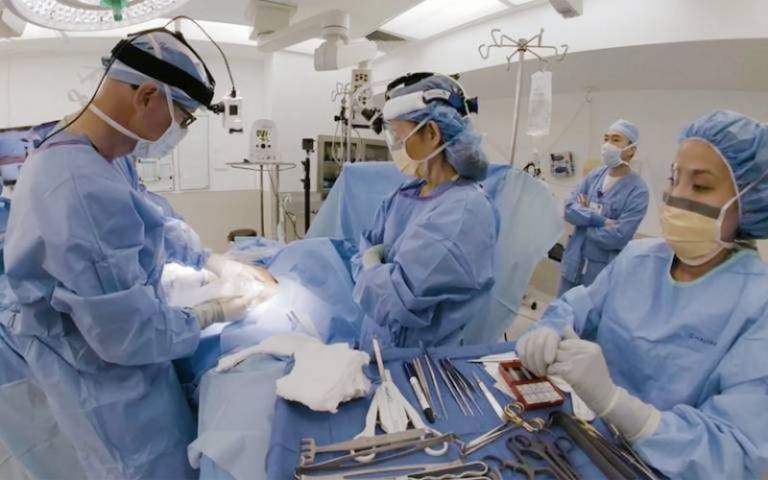Application of magnetic materials for detecting breast cancer
UCL researchers have developed a method to detect the spread of breast cancer. The magnetic nanoparticles detect cancer cells in sentinel lymph nodes, treating more than 225,000 patients worldwide.

28 April 2022
Globally, 2.3 million new cases of breast cancer are diagnosed each year, with the number increasing year on year. A minimally invasive sentinel lymph node biopsy (SNLB) is the recommended standard of care for patients with breast cancer to determine whether the cancer has spread.
Usually doctors identify the sentinel lymph node - the first lymph node that cancer cells reach - by injecting a radioactive tracer fluid close to the tumour to provide a trackable signal; the node is then removed to determine whether or how far the cancer has spread. In Britain, around 80% of all operations for breast cancer include SLNB, but the figures drop dramatically in other parts of the world where access to safe radioactive medicine is less common.
The development of Sentimag® and Magtrace®
A team of UCL researchers developed both the Sentimag® platform featuring a detector and a magnetic tracer, now known as the Magtrace® lymphatic tracer, to replace the radioactive isotopes. The tracer contains coated iron oxide particles, each with a diameter of just 60 nanometres, which are easily absorbed by the lymph nodes. The detector device is hand-held and can be operated with minimal clinical training.
In 2007, a spin-out company, Endomag (previous known as Endomagnetics) was established to commercialise the devices. Over the next few years, the team worked on refining a prototype of the Sentimag®, which received CE marking in 2010, providing approval for use throughout Europe. The company has expanded in recent years to employ over 80 FTE employees in the UK and US and in 2021 saw increase by 59%, despite the ongoing challenges of the pandemic.
The award-winning detection system treating patients worldwide
The detection system has been tested in several clinical trials which confirm that it detects cancer cells at a similar rate to radioisotope techniques and has also been shown to be effective at tracking melanomas. It won the Queen’s Award for Enterprise in 2018 and was recently awarded the Queen’s Award for International Trade 2021, recognising its availability in over 45 countries around the world. It has already been used to treat 225,000 patients world-wide.
In response to the COVID pandemic and as breast cancer services were moved to smaller COVID-free facilities without nuclear medicine departments, Endomag provided free vials of the Magtrace® tracer to the NHS and offered free guidance and advice to clinicians to support implementation.
"The tiny magnetic particles of the Magtrace lymphatic tracer are optimised to take the same path as a spreading cancer cell would through the lymphatic system, making it an ideal tracer for sentinel lymph node biopsy procedures." - Endomag website.
Research synopsis
Application of magnetic materials for detecting breast cancer
A new method to detect whether a person’s breast cancer has spread has been developed at UCL. The system uses magnetic nanoparticles rather than radioactive isotopes to detect cancer cells in sentinel lymph nodes and has been used to treat more than 225,000 breast cancer patients worldwide to-date.
Project team: Professor Quentin Pankhurst
Links
- Professor Quentin Pankhurst’s academic profile
- UCL Department of Medical Physics and Biomedical Engineering
- UCL Faculty of Engineering Sciences
- UCL Faculty of Engineering Sciences REF 2021
Image
- Image credit: endomag
 Close
Close

